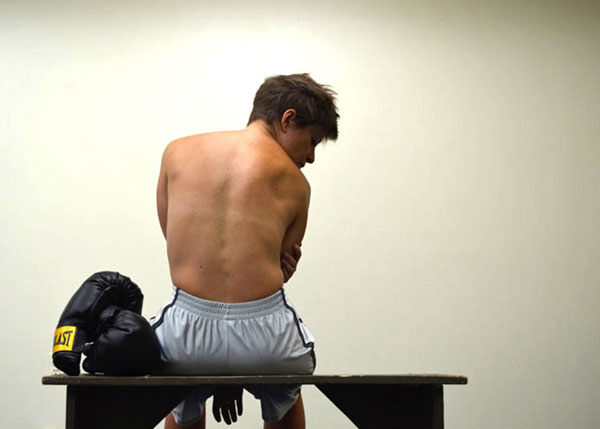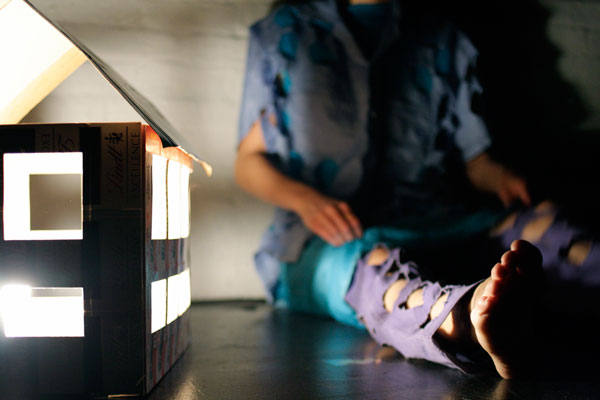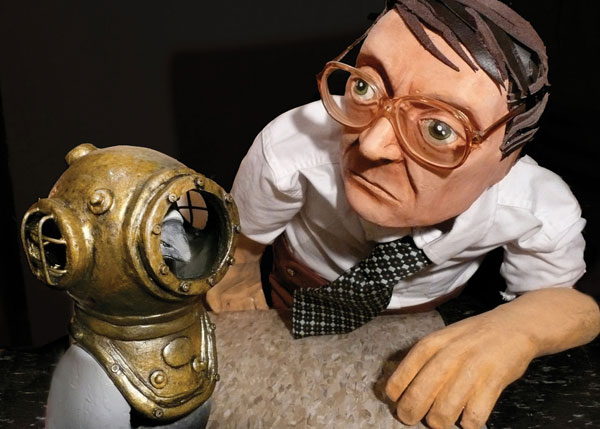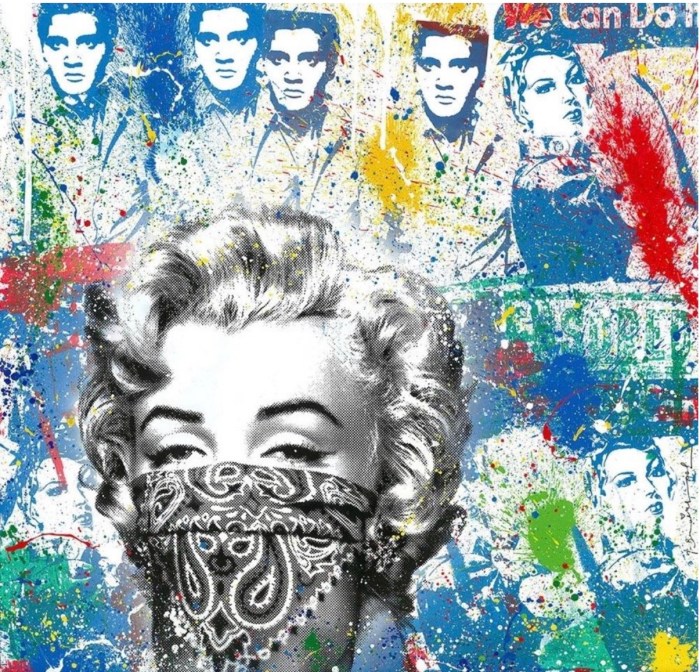
Culturemart offers first looks at new works
BY SCOTT STIFFLER | Like the image of fully stocked megastore shelves its last syllable conjures, the consumer-friendly content in this year’s sprawling CULTUREMART is a cut above products that have been rushed to market. As such, you’ll be spared the “works in progress” disclaimer that savvy audiences have come to associate with festivals offering an embarrassment of rich ideas bogged down by an embarrassingly underdeveloped presentation.
Fully realized shows — fit for public consumption, yet destined to grow beyond their present state: That’s the promise made to audiences by CULTUREMART.

“We call it a festival of workshop productions,” clarifies HERE Producing Director Kim Whitener upon request. “In our vocabulary, we have works in progress and workshops. The difference is real. You can throw a work in progress up with very little rehearsal and a couple of lights and invite a few people to see it as a way to give feedback and test ideas. Whereas with a workshop, we’re giving them [the artists] more time, a couple days of [pre-show] tech and more money. They usually take more time rehearsing, and they’re selecting a chunk of what this piece is going to be…and we charge a ticket price.”
At $10, CULTUREMART offers a very low ticket price. But don’t mistake that deep discount for the implication that you’re getting bargain basement production values. What you see on the stage, Whitener assures, is as well-developed visually as it is philosophically. There is, however, an understanding between artist and audience that the still-evolving work “is a substantial piece of a project coming down the pike, and we’re inviting you into that process. It isn’t finished yet, but you’re going to get a very strong sense of what it is…and what it’s going to be.”
In addition to works that have been seen in past CULTUREMART festivals (and three productions by alumni back with new projects in development), eight workshop performances are being staged by new members of the HERE Artist Residency Program (HARP). All of the productions are expected to fulfill HERE’s mandate that commissioned work “blur the lines between dance, theater, music, multimedia, puppetry and visual art” on its journey to a full mainstage presentation. HARP artists have a proven track record as writers, producers and performers — and although they may be well-known to Downtown audiences and within their particular discipline’s peer group, they’re not (yet) household names.
“We wouldn’t call them established artists,” says Whitener, “but we don’t call them emerging. They’re mid-career, in the sense that they all have done full-length work before. They’ve been working five to ten years, and they have an established vocabulary. One of our watchwords is ‘artist-led.’ We give them money, time in our spaces, rehearsal space, we give them a lot of support and guidance and council but their vision comes first and we’re here to help make them happen.”
Culled from around 200 applicants each year, the members of HARP are, along with their own unique voices, expected to speak the language of their sponsoring venue. “It’s important that the work be hybrid,” Whitener says of her desire to nurture artists able to draw upon “all manner of performance. It brings two or more genres together in a very contemporary theatrical work.”
The venue’s multidisciplinary identity has, Whitener notes, “been more or less that way since the inception of HERE in the early 90s, and the establishment of the residency program in 1998. It was about providing a niche for this kind of work” — work which she describes as “emblematic of our times,” which could mean any time in the 90s just as well as the here and now.
The mid-career artists in HARP are, quite literally, children of the digital age — early adopters of technology that allowed stage performance to fully embrace the notion that artistic output can be the product of “many inputs…film, music, media, online activities” and, in recent years, “social media. As our world became more complex, their work became more complicated. We’re all multitasking, and we’re all multifocused. We think audiences come here to be stimulated in that way, in the same way that our artists are not interested in being defined, or confined, by one medium.”
That merging of styles — always, Whitener asserts, to serve a work’s central themes rather than simply providing compelling window dressing, can be seen in CULTUREMART projects such as Soomi Kim’s “Chang(e)” — which Whitener describes as “a political work that involves dance, movement and video” as well as original music. Based on the life and work of Philadelphia-based Asian American performance artist and activist Kathy Change, the work has already had its festival run (on January 28 & 29).
Also working the theater/music hybrid aesthetic, Whitener says, is the February 4 and 5 run of mezzo-soprano Hai-Ting Chinn’s “Science Fair” — “which is a song cycle about the scientific world view. The two pieces couldn’t be more different, but they’re both saying, ‘I have a story to tell and I want to do it in this way.’ ”
On a shared bill with “Science Fair” (and followed by a conversation on dance and visual art), Mei-Yin Ng’s “Lost Property Unit” concerns a woman in seclusion whose sole link to society is her cyborg pet. Inspired by Chinese mythology, surveillance and the seductive power of technology, the mixed-media dance piece merges elements of Hitchcock suspense, “Twilight Zone” sci-fi fantasy and the melancholy romanticism of filmmaker Wong Kar-wai.
Don’t feel the need, though, to Netflix your way through the oeuvre of Rod Serling or become intimately familiar with cultural myths. What ends up on the CULTUREMART stage is a distilled essence of hybrid influences, rather than a series of snarky, self-referential touchstones.
That said, Whitener does hope that exposure to new performance styles, along with new ideas, will inspire audiences to appreciate what an unfamiliar genre has to offer. That’s exactly what happened to her, she recalled, when she began to talk up Robin Frohardt’s original puppet piece (“The Pigeoning”).

“Ten years ago,” Whitener admits, “I’d be hard pressed to tell you what piece I loved from the puppetry world. But since then, it has just exploded as a form in New York City. Watching a puppet is this incredible experience of having a story told, but with this whole other world around it. The puppeteers are supposed to disappear, but you know they’re there, manipulating. You’re aware of the artistry behind it, but you get lost in the story. So I feel it’s multitasking in a very deep way.”
Performed February 6 and 7, “The Pigeoning” uses five puppeteers, live music and no dialogue to tell its story of obsessive compulsion and pigeons. Robin Frohardt, whom Whitener calls “wonderful and mature, in terms of her artistry,” has created a piece that’s “quite deep, in that it explores a dark world that’s coming to an apocalyptic place. It feels very contemporary, and very real.”
“The Pigeoning” is on a shared bill with Joseph Silovsky’s solo work, “Send for the Million Men” — which uses robotics, puppets and handmade projectors to examine how the trial of Sacco and Vanzetti impacted the world during the turbulent 1920s.
If you’re reading this article past the run date of a particular show, CULTUREMART puts its audiences, along with its artists, in the unique position of knowing there’ll be a return engagement. As for those who do take in a work during the festival, Whitener hopes “they will then be invested in that project, and will want to come back when it [the full production] premieres. It’s our philosophy of involving the audience along the way. Typically, that process is hidden. But we feel it’s food for the artist, and the project, and the ultimate perfecting of the piece to have this opportunity.”
CULTUREMART 2013
An Annual First Look at New Work in Development From Artists in the HERE Artist Residency Program
Through Feb. 10 At HERE
145 Sixth Ave., entrance on Dominick St.
Tickets: $10 in advance, $15 within 24 hours of show
Student Rush: Free with Student ID (at the box office)
For tickets & info: 212-352-3101
or here.org
Full production schedule also
available at here.org

















